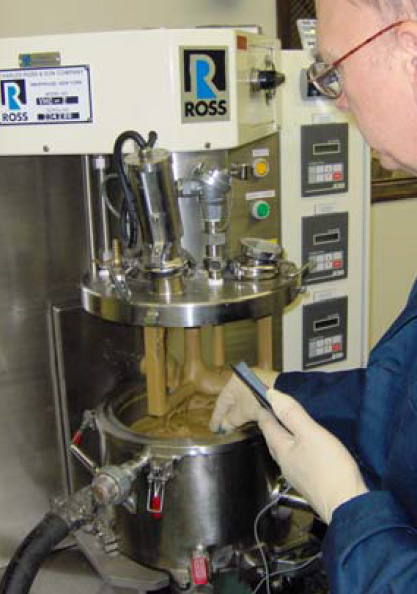Tech Report
Multi-purpose laboratory mixers

Technology Brief
Multi-Shaft Mixers are highly efficient and versatile equipment ideal for developing formulations of wide ranging viscosities and characteristics.
Mix more products with a Multi-Shaft Mixer
As R&D facilities endeavor to make sustainability a top priority, laboratory managers eventually face the task of replacing old equipment with more energy-efficient, versatile and durable machines. Mixing and blending equipment are no exception.
While the choices for laboratory mixers are many - from simple magnetic stirrers, kitchen-style blenders and overhead mixers to more expensive glass reactors and homogenizers - only several are truly scalable to production volumes. Since many mixtures obtain characteristics that are process-sensitive, the proper mixing equipment must be identified at the R&D level. Without a practical path to scale-up, results produced in the lab cannot be replicated in a cost-effective manner. At the same time, an ideal lab mixer is one that is versatile enough to accomplish a range of processing objectives: dissolution, powder wet-out, particle size reduction or deagglomeration/wet-milling, emulsification, homogenization, etc. This allows it to handle many different types of formulations and makes it sustainable for future applications needs.
Multi-Shaft Mixers, comprised of two or more independently-driven agitators, satisfy many of the above requirements. A typical design features a low-speed anchor and one or two high shear devices, such as a sawtooth disperser blade or a rotor/stator assembly. For more superior axial movement of delicate viscous products, an auger screw or helical-style anchor may be supplied. Other agitator options are available depending on the manufacturer.
Some selection guidelines and considerations
- Viscosity range. A well-designed Multi-Shaft Mixer can handle water-like viscosities as easily as it can process heavy mixtures up to ~1 million cP.
- Shear requirement. Since the agitators in a Multi-Shaft Mixer can be supplied in many different combinations, one of the first things to determine is the configuration that will best serve your process. One approach is to establish the appropriate level of shear during critical steps in the mixing cycle, i.e.while incorporating powders, disintegrating lumps, dissolving or pureeing solids, reducing droplet size or suspending particulates. Testing will confirm if an anchor agitator with disperser will be sufficient or if a rotor/stator mixer or second disperser shaft is necessary. When mixing shear-sensitive products, a propeller, auger, bow-tie, paddle or other suitable blade may be used. Note that Multi-Shaft Mixers can be supplied with interchangeable blades.
- Vacuum mixing. Consider a vacuum-capable mixer supplied with a built-in vacuum pump pre-wired to the mixer's main control panel. Mixing under vacuum provides many benefits including better dispersion, void-free finished product, improved material handling and faster overall processing since it eliminates costly and timely downstream deaeration steps. Multi-Shaft Mixers are likewise commonly built for internal pressures.
- Accessories. Complete mixer packages including a mobile work bench, heating/cooling unit, load cells, discharge system and other accessories are available. Such compact turnkey systems can be customized according to your specific lab layout and available space.
Sample Application: Glue Stick Adhesive
When an adhesive company decided to develop new formulations for their line of glue stick products, they visited the Ross Test & Development Center to identify the best laboratory mixer for their purposes.
From initial work done in their laboratory and small batches that were mixed by hand, they knew that high shear is not desirable; however, there is a stage where pulling a vortex is necessary in order to disperse powders into the thick batch. The mixing trials performed at Ross confirmed the most efficient configuration: a vacuum-capable Triple-Shaft Mixer equipped with anchor sweep, high speed disperser and auger agitator.
One of the recipes starts with the preparation of a gel consisting of deionized water, glycerin, propylene glycol, ethyl paraben and polyvinylpyrrolidone (PVP). Next, batch temperature is increased and a low-viscosity emulsion is mixed in.
The disperser blade is then run at high speed as sodium stearate powders are added through the sight port. After all the solids are in, the disperser is turned off and the slow-speed agitators bring the batch to a uniform state before caustic solution is added.The final mixing stage is done under partial vacuum (5-10"Hg).
The finished batch is around 50,000 cP at 160°F. It flows freely through a 1" flush bottom valve just by gravity and is discharged into glue stick molds for cooling.